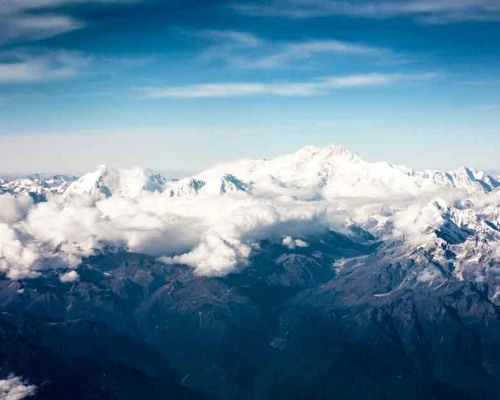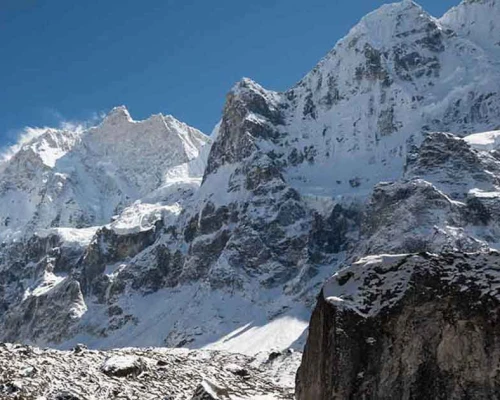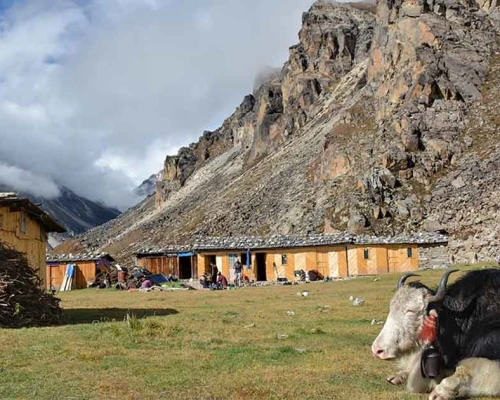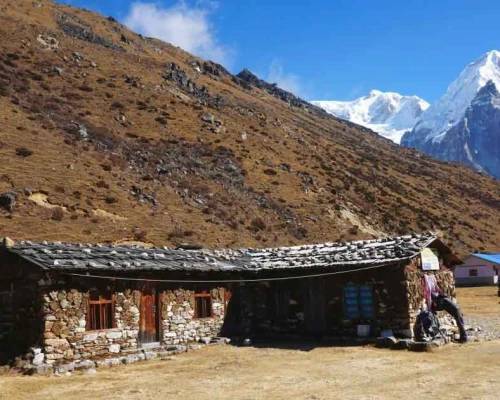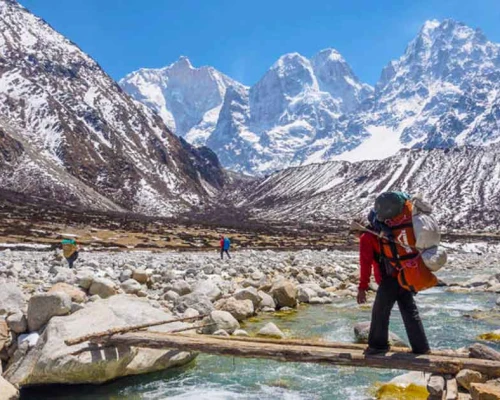Kanchenjunga Trekking is a remote, wild and loaded trekking with amazing natural experience. Named after Kanchenjunga Peak (8,586m), the world's third-highest mountain in the world, this trekking area is situated in Taplejung District in the north-eastern part of Nepal on the fringes of Sikkim and Tibet.
The Kanchenjunga trekking territory is notable for its three-stream valleys. These are the Simbua Khola, the Ghunsa and the Tamur valleys. In 1997, the Government of Nepal in help of WWF has pronounced the center territory of Kanchenjunga district as a "Gift to the Earth".
The major features of the Kanchenjunga trekking are the brilliant perspectives on Kanchenjunga Massif, differed scenes of backwoods, waterways, icy masses and charming woodland of rhododendrons, pine, orchids, and oak.
Kanchenjunga trekking specializes with Kanchenjunga Conservation Area. Spread in a region of 2,035 square kilometers, Kanchenjunga Conservation Area is the fascination under which you will discover the uncommon and mesmerizing floral and faunal perspective of rhododendrons, orchids, garbage deer, snow panther, Asiatic wild bear, red panda and so forth.
Kanchenjunga trekking territory is likewise a worldwide hotspot for plant biodiversity. Upward of 23 types of rhododendrons and more than 2,000 blooming plants have been recognized here.
The Kanchenjunga trekking enables you to find the interesting nearby culture and life-style of the local individuals. They reside in the peaceful town that stretches passing the outskirt to Tibet and Sikkim.
This Kanchenjunga trekking locale is wealthy in ethnic assortment with a variety of culture with more than 11 ethnic networks including Limbus, Sherpa, Rai, Chhetri, and Brahmins.
The region additionally has a score of cloisters, chortens, sanctuaries, supplication dividers which structures a woven artwork of rich social legacy. Kanchenjunga Trekking is absolutely an outdoor trek for enjoying splendid mountain local and natural viewpoint.
Kanchenjunga trekking route progressively scrambles from 1,200 meters (4,000 feet) to 5,180 meters (17,094 feet) above sea level. The atmosphere, during this trek to Kanchenjunga, differs from the subtropical rainstorm and sticky summer at the lower rises to cold and wet winter in the snow-capped district.
En route, you will stroll along trails utilized by local people and yaks (and yak herders), while the fundamental Kanchenjunga trekking has still been portrayed as 'untracked'. Amid this trekking experience, we will likewise traverse a few passes including Mirgin La Pass which offers magnificent perspectives on Kanchenjunga Massif.
Best Time for Kanchenjunga Trekking
The best month/season for trekking to the Kanchenjunga region is from early March to mid-May and from October to late November. We suggest escaping the monsoon season which keeps running from around late May to mid/late September.
Throughout the winter, numerous locals person will move to bring down rises and teahouses will close so the main choice will camp and it will be incredibly cold. In the springtime, you can see a mind-blowing show of the Rhododendrons in bloom, with the numerous assortments becoming here blossoming in various colors.
In spring, the trails will be drier while in autumn the skies are perfectly clear however the trails may have changed with the monsoon rain. Kanchenjunga Trekking slays worldwide with its enormous beauty and concealed treasure of mountain perspective, local cultural and historic amusement, sunrise and sunset panorama, and a lot of superiorities that can setback the mind of anyone.
Nepal Trek Adventure and Expedition (NTA) delivers this utmost occasion of exploring around one of the highest peaks in the world, Mount Kanchenjunga via Kanchenjunga Trekking itinerary in the most exclusive cost descriptions. Also, the itineraries are customizable; and likewise, tailor-made itineraries are also applicable. Hence, feel free to contact us anytime anywhere.
Book now and get free t-shirts, caps, and stickers.



